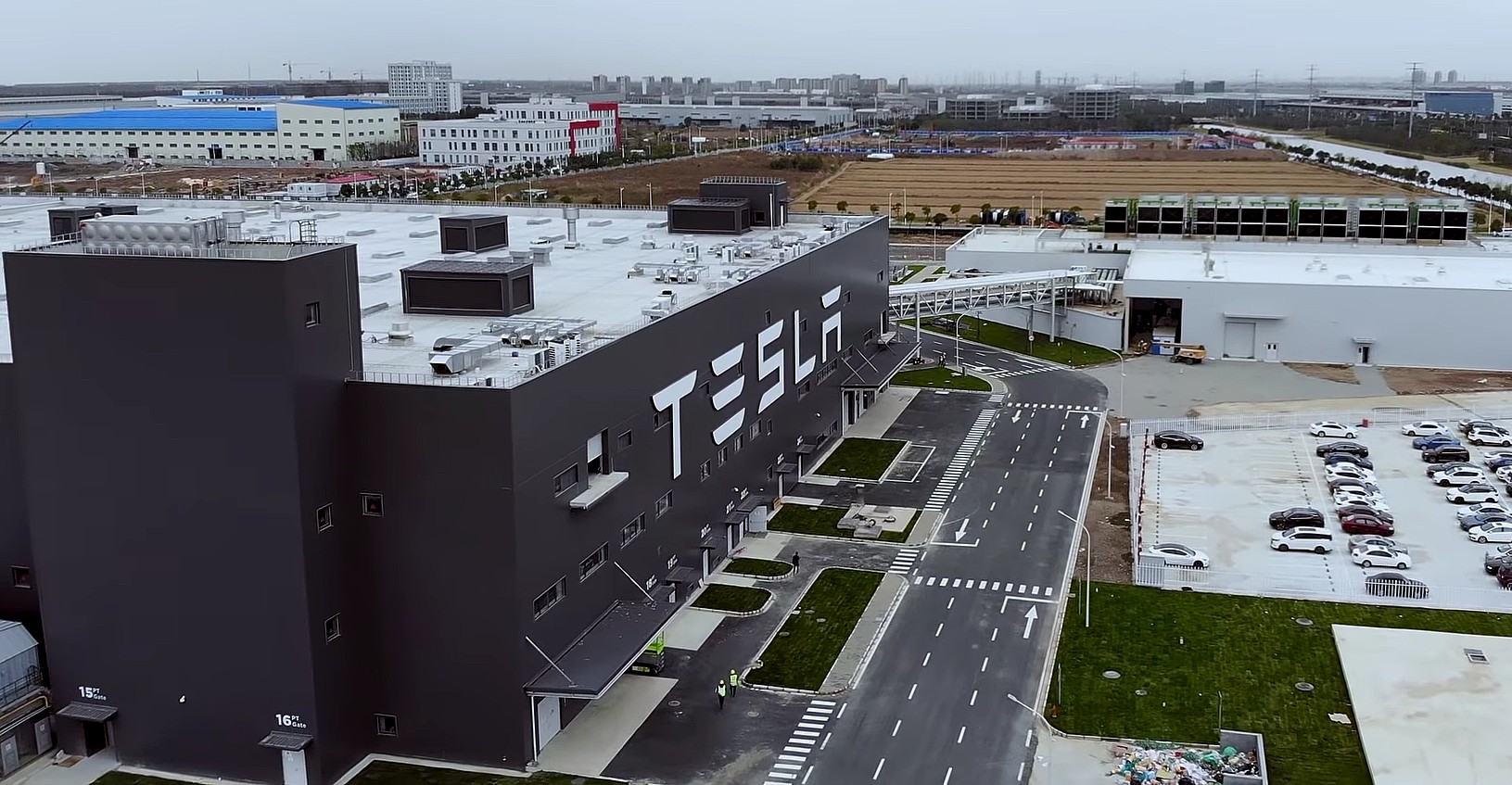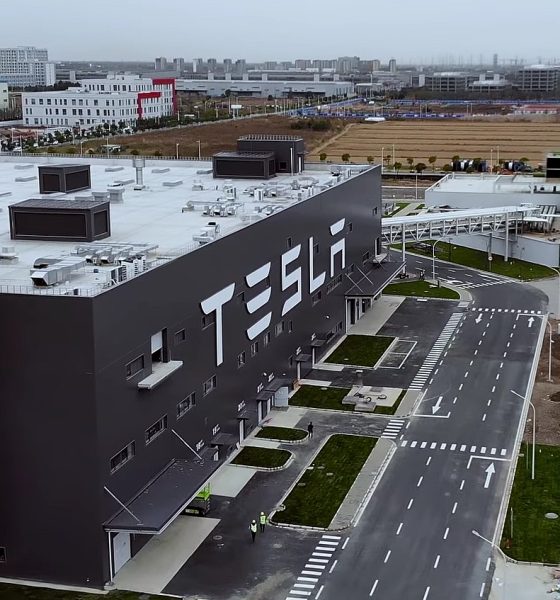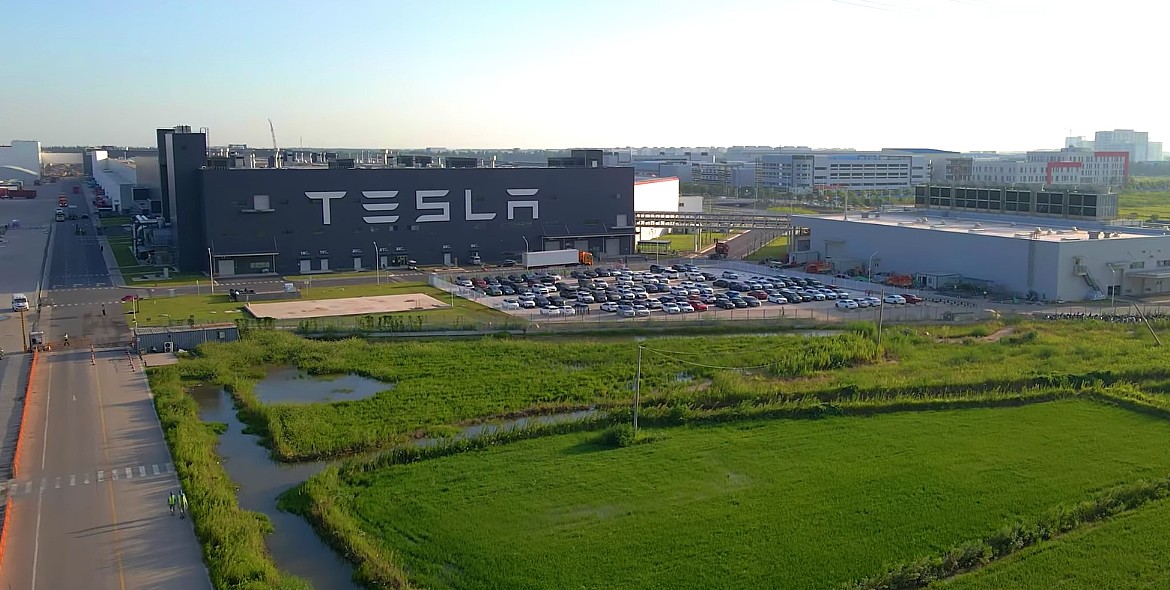

News
Tesla China battery supplier CATL plans for new facility near Giga Shanghai
Tesla battery supplier CATL plans to build a new production facility near Tesla’s Giga Shanghai electric vehicle production plant in China. The new facility will extend CATL’s lead as the world’s largest battery manufacturer and will also assist Tesla in its EV production efforts in China, where demand for the company’s electric vehicles continues to grow.
The facility will reportedly be located near Tesla’s Giga Shanghai production facility located in the Fengxian District, located about an hour and 10 minutes southeast of downtown Shanghai. The plant is likely to end up south of Giga Shanghai, and could include a Research, Global Sales, and Operations Center, as the company is having trouble retaining and hiring staff in Ningde, where the company’s headquareters are located, Reuters reported.
Tesla and CATL entered a partnership in early 2020 after Giga Shanghai first started the mass production of the Model 3. Tesla began delivering the Model 3 to Chinese citizens in January 2020, and the automaker entered a partnership with CATL just a month later, in early February.
(Credit: Jason Yang/YouTube)
Since then, CATL’s supply of lithium-ion EV batteries has helped Tesla attain the rank of the most popular electric automaker in China in 2020.
Now, CATL looks to further solidify its partnership with Tesla through a new facility that would help supply Giga Shanghai with additional battery cells. The partnership would help sustain the growth that Tesla has experienced through the past year in China. In 2020, Tesla was China’s most popular electric car company, leading the SAIC-GM-Wuling partnership that brought the highly affordable HongGuang Mini EV to the market.
Sources familiar with the matter told Reuters that the new plant would have a capacity of 80 gigawatt-hours per year. Analysts said that this would be capable of powering around 800,000 EVs annually.
The planned 80 GWh facility would supplement that already 69.1 GWh in current production and add to the additional 77.5 GWh under construction.
The reasoning for the Shanghai location does not only have to do with Tesla’s production facility. Sources also told Reuters that the company would have the ability to draw from a more diversified talent pool in the Shanghai region. This theory is compared to its headquarters in Ningde, a city in southeastern China. CATL plans to hire 5,000 workers who will assist in the manufacturing of cell-to-chassis (CTC) batteries.
This new technology would integrate EV cells directly onto the chassis of an electric car. According to CATL chairman Zeng Yuqun, the CTC tech is capable of reaching 500 miles (804.67 km) per charge, a considerable boost from the current 290 mile (468 km) range that Shanghai-built Model 3s currently get. The company plans to release the tech before 2030.
The new battery production plant would also supply other companies that have partnerships with CATL, like Volkswagen, GM, BMW, and Daimler, with EV batteries.
What do you think? Let us know in the comments below, or be sure to email me at joey@teslarati.com or on Twitter @KlenderJoey.

News
Tesla China quietly posts Robotaxi-related job listing
Tesla China is currently seeking a Low Voltage Electrical Engineer to work on circuit board design for the company’s autonomous vehicles.

Tesla has posted a new job listing in Shanghai explicitly tied to its Robotaxi program, fueling speculation that the company is preparing to launch its dedicated autonomous ride-hailing service in China.
As noted in the listing, Tesla China is currently seeking a Low Voltage Electrical Engineer to work on circuit board design for the company’s autonomous vehicles.
Robotaxi-specific role
The listing, which was shared on social media platform X by industry watcher @tslaming, suggested that Tesla China is looking to fill the role urgently. The job listing itself specifically mentions that the person hired for the role will be working on the Low Voltage Hardware team, which would design the circuit boards that would serve as the nervous system of the Robotaxi.
Key tasks for the role, as indicated in the job listing, include collaboration with PCB layout, firmware, mechanical, program management, and validation teams, among other responsibilities. The role is based in Shanghai.
China Robotaxi launch
China represents a massive potential market for robotaxis, with its dense urban centers and supportive policies in select cities. Tesla has limited permission to roll out FSD in the country, though despite this, its vehicles have been hailed as among the best in the market when it comes to autonomous features. So far, at least, it appears that China supports Tesla’s FSD and Robotaxi rollout.
This was hinted at in November, when Tesla brought the Cybercab to the 8th China International Import Expo (CIIE) in Shanghai, marking the first time that the autonomous two-seater was brought to the Asia-Pacific region. The vehicle, despite not having a release date in China, received a significant amount of interest among the event’s attendees.
Elon Musk
Elon Musk and Tesla AI Director share insights after empty driver seat Robotaxi rides
The executives’ unoccupied tests hint at the rapid progress of Tesla’s unsupervised Robotaxi efforts.

Tesla CEO Elon Musk and AI Director Ashok Elluswamy celebrated Christmas Eve by sharing personal experiences with Robotaxi vehicles that had no safety monitor or occupant in the driver’s seat. Musk described the system’s “perfect driving” around Austin, while Elluswamy posted video from the back seat, calling it “an amazing experience.”
The executives’ unoccupied tests hint at the rapid progress of Tesla’s unsupervised Robotaxi efforts.
Elon and Ashok’s firsthand Robotaxi insights
Prior to Musk and the Tesla AI Director’s posts, sightings of unmanned Teslas navigating public roads were widely shared on social media. One such vehicle was spotted in Austin, Texas, which Elon Musk acknowleged by stating that “Testing is underway with no occupants in the car.”
Based on his Christmas Eve post, Musk seemed to have tested an unmanned Tesla himself. “A Tesla with no safety monitor in the car and me sitting in the passenger seat took me all around Austin on Sunday with perfect driving,” Musk wrote in his post.
Elluswamy responded with a 2-minute video showing himself in the rear of an unmanned Tesla. The video featured the vehicle’s empty front seats, as well as its smooth handling through real-world traffic. He captioned his video with the words, “It’s an amazing experience!”
Towards Unsupervised operations
During an xAI Hackathon earlier this month, Elon Musk mentioned that Tesla owed be removing Safety Monitors from its Robotaxis in Austin in just three weeks. “Unsupervised is pretty much solved at this point. So there will be Tesla Robotaxis operating in Austin with no one in them. Not even anyone in the passenger seat in about three weeks,” he said. Musk echoed similar estimates at the 2025 Annual Shareholder Meeting and the Q3 2025 earnings call.
Considering the insights that were posted Musk and Elluswamy, it does appear that Tesla is working hard towards operating its Robotaxis with no safety monitors. This is quite impressive considering that the service was launched just earlier this year.
Elon Musk
Starlink passes 9 million active customers just weeks after hitting 8 million
The milestone highlights the accelerating growth of Starlink, which has now been adding over 20,000 new users per day.

SpaceX’s Starlink satellite internet service has continued its rapid global expansion, surpassing 9 million active customers just weeks after crossing the 8 million mark.
The milestone highlights the accelerating growth of Starlink, which has now been adding over 20,000 new users per day.
9 million customers
In a post on X, SpaceX stated that Starlink now serves over 9 million active users across 155 countries, territories, and markets. The company reached 8 million customers in early November, meaning it added roughly 1 million subscribers in under seven weeks, or about 21,275 new users on average per day.
“Starlink is connecting more than 9M active customers with high-speed internet across 155 countries, territories, and many other markets,” Starlink wrote in a post on its official X account. SpaceX President Gwynne Shotwell also celebrated the milestone on X. “A huge thank you to all of our customers and congrats to the Starlink team for such an incredible product,” she wrote.
That growth rate reflects both rising demand for broadband in underserved regions and Starlink’s expanding satellite constellation, which now includes more than 9,000 low-Earth-orbit satellites designed to deliver high-speed, low-latency internet worldwide.
Starlink’s momentum
Starlink’s momentum has been building up. SpaceX reported 4.6 million Starlink customers in December 2024, followed by 7 million by August 2025, and 8 million customers in November. Independent data also suggests Starlink usage is rising sharply, with Cloudflare reporting that global web traffic from Starlink users more than doubled in 2025, as noted in an Insider report.
Starlink’s momentum is increasingly tied to SpaceX’s broader financial outlook. Elon Musk has said the satellite network is “by far” the company’s largest revenue driver, and reports suggest SpaceX may be positioning itself for an initial public offering as soon as next year, with valuations estimated as high as $1.5 trillion. Musk has also suggested in the past that Starlink could have its own IPO in the future.








